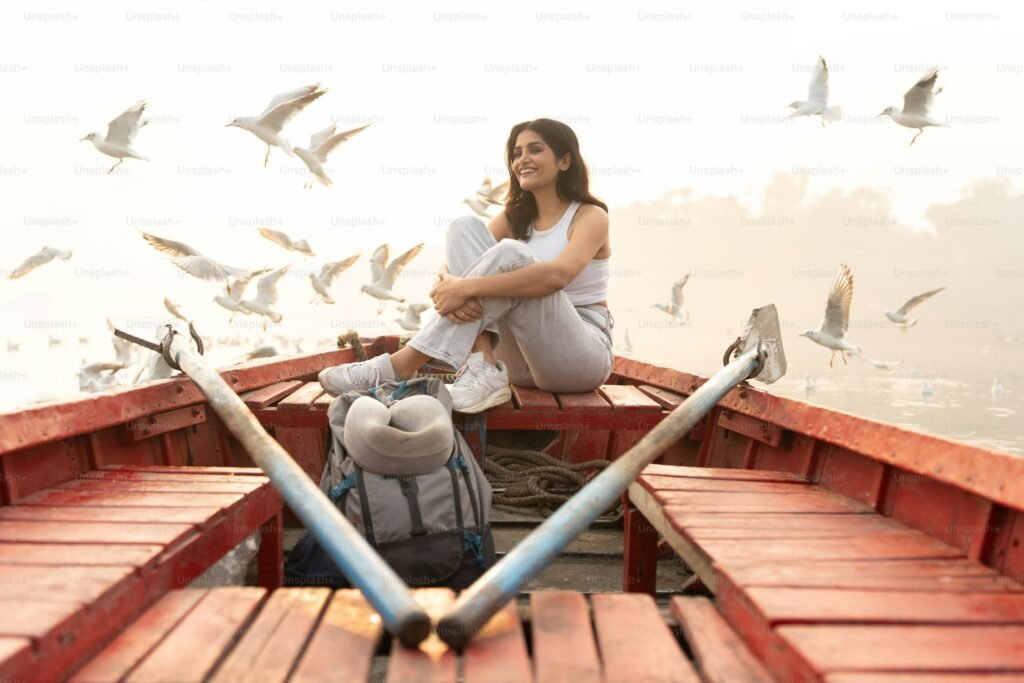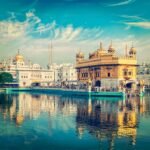If India were a tapestry, its threads would shimmer with palaces, temples, bazaars, and living history. Few itineraries stitch those threads together as artfully as the classic Golden Triangle—Delhi, Agra, and Jaipur. Yet when you weave in the sculptural brilliance of Khajuraho, the journey transforms from iconic to unforgettable. In this guide, we map out how to “golden triangle tour with khajuraho” elevates a well‑loved circuit into a panorama of Mughal majesty, Rajput romance, and Chandela‑era artistry.
Why Expand the Classic Circuit?
The Golden Triangle’s three vertices already deliver a crash course in North India’s cultural DNA: Delhi’s layered dynasties, Agra’s Mughal masterpieces, and Jaipur’s flamboyant Rajput heritage. Khajuraho, tucked away in Madhya Pradesh, adds a fourth dimension—central India’s medieval temple art famous for its intricate carvings, both sacred and sensuous. Folding Khajuraho into the loop:
- Diversifies architectural styles—from sandstone forts to marble mausoleums to granite shrines.
- Balances urban energy with small‑town serenity.
- Extends the average seven‑day triangle to roughly ten days, perfect for travelers seeking deeper immersion without venturing far afield.
Ideal Route & Duration
A streamlined itinerary flows clockwise:
- Delhi (Days 1–2)
- Agra (Day 3)
- Jaipur (Days 4–6)
- Khajuraho via Orchha or directly by flight/overnight train (Days 7–8)
- Return to Delhi or onward to Varanasi (Day 9–10)
This sequencing minimizes backtracking and leverages good rail, road, and flight connectivity. If time is tight, swap Jaipur–Khajuraho legs by taking the daily Khajuraho–Delhi flight after Agra, then drive to Jaipur; however, overland travel through the Chambal ravines and Bundelkhand countryside is part of the charm.
Highlights City by City
Delhi: Palimpsest of Empires
Start where seven historical cities overlap. Explore UNESCO‑listed Red Fort at dawn before crowds swell, stroll Jama Masjid’s marble courtyards, and ride a cycle‑rickshaw down Chandni Chowk to fragrance‑laden spice lanes. New Delhi’s colonial axis—India Gate, Rashtrapati Bhavan, and Parliament—reveals yet another layer. Evenings glitter in Hauz Khas Village and Connaught Place, blending heritage with hip cafés.
SEO tip: Pair phrases like “heritage walk in Old Delhi” and “Lutyens architecture tour” with long‑tail modifiers such as “best time,” “skip‑the‑line,” or “private guide” for higher intent queries.
Agra: Mughal Poetry in Marble
The Taj Mahal earns every superlative, but expand your lens to include Agra Fort’s palatial pavilions and Itmad‑ud‑Daulah, often dubbed “Baby Taj.” Sunset from Mehtab Bagh across the Yamuna River paints the white mausoleum in rose‑gold hues—a photographer’s dream. Foodies should not miss petha (candied ash gourd) and Mughlai curries simmered with saffron and dried fruits.
SEO tip: Use semantic variations like “sunrise Taj Mahal entry tips” or “Agra street food walk” to capture diversified searches.

Jaipur: Regal Rajasthan
Dubbed the Pink City for its terracotta‑hued façades, Jaipur dazzles with Amber Fort’s hillside ramparts, Hawa Mahal’s honeycomb windows, and the celestial instruments of Jantar Mantar observatory. Bargain at Johari Bazaar for gemstone jewelry, then unwind in a boutique haveli. Venture beyond city limits to the step‑well of Chand Baori or the leopard‑spotted Aravalli hills of Jhalana Safari Park.
SEO tip: Incorporate conversational keywords like “is Jaipur safe for solo travelers” and “best rooftop restaurants in Jaipur” to answer travelers’ pain points.
Khajuraho: Stone Symphony
Where the triangle morphs into a diamond, Khajuraho’s 20‑odd surviving temples (out of an original 85) stand as UNESCO marvels. Western Group anchors the visit: Kandariya Mahadeva rises like a mountain of deities, while Lakshmana Temple’s friezes depict cosmic cycles of life. Contrary to clichés, only 10 percent of carvings are erotic; the remainder narrates mythological battles, musicians, dancers, and everyday court life—capturing a civilization’s holistic worldview.
Arrive for the sound‑and‑light show that projects tales of the Chandela kings onto temple walls under a starlit sky. At dawn, the soft glow turns sandstone into pale gold—ideal for meditation or photography workshops.
SEO tip: Target micro‑niches such as “Khajuraho photography tour” or “meaning of Khajuraho sculptures” to reach culture seekers.
Practical Pointers
Best Season – October to March offers crisp skies and mild days. April–June’s heat can soar past 40 °C; choose dawn and dusk sightseeing if traveling then. Monsoon (July–September) refreshes landscapes but may disrupt road travel.
Getting Around –
- Rail: Gatimaan Express links Delhi‑Agra in under two hours. Shatabdi and Intercity trains connect onward legs to Jhansi (gateway to Khajuraho via Orchha).
- Flights: Khajuraho Airport has daily hops to Delhi, Varanasi, and sometimes Jaipur—handy for squeezing itineraries.
- Road: National highways have improved dramatically; private chauffeur‑driven cars remain the most flexible mode for door‑to‑door fort and village detours.
Accommodation – Heritage hotels abound: sleep in a Mughal‑era mansion by Agra’s Yamuna ghats, a Rajput palace overlooking Jaipur’s lake, or a jungle‑fringed eco‑lodge near Khajuraho. Booking midweek fetches better rates.
Cultural Etiquette – Modest clothing is respectful inside temples and mosques. Remove shoes and leather belts where required. Always ask before photographing people, especially priests or rural women.
Value‑Adds for the Modern Traveler
- Experiential Workshops: Block‑printing in Jaipur, Parchin Kari (pietra dura) in Agra, or classical dance lessons in Khajuraho.
- Sustainable Choices: Pick lodges employing local artisans, carry refillable bottles, and favor certified guides. Responsible tourism keywords such as “eco‑friendly stay Golden Triangle” resonate with conscious readers.
- Digital Convenience: India’s e‑SIM options and UPI mobile payments simplify logistics; highlight phrases like “how to get Indian e‑SIM for tourists” for tech‑savvy audiences.
Final Thoughts
A golden triangle tour with khajuraho is more than ticking monuments off a checklist—it’s about sensing how disparate dynasties conversed through stone, marble, and pigment across centuries. From Delhi’s bustling avenues to Khajuraho’s tranquil groves, each stop offers a unique cadence, yet together they form a harmonious raga of North and Central India. Plan thoughtfully, travel responsibly, and you’ll carry home not just photographs, but a layered narrative of India’s enduring legacy—one that beckons you to return and uncover still‑hidden verses in its epic poem.
Related Reads
- Tin Shed Construction: Fast Construction, Excellent Quality
- ProstaVive Helps Men Maintain Healthy Prostate Function
- Ang Chee Hian: Visionary Leader in Singapore’s Real Estate Investment
- What Is the Best Way to Write a Dissertation Assignment?
- CSR NGO in India | Spherule Foundation Driving Sustainable Social Change



